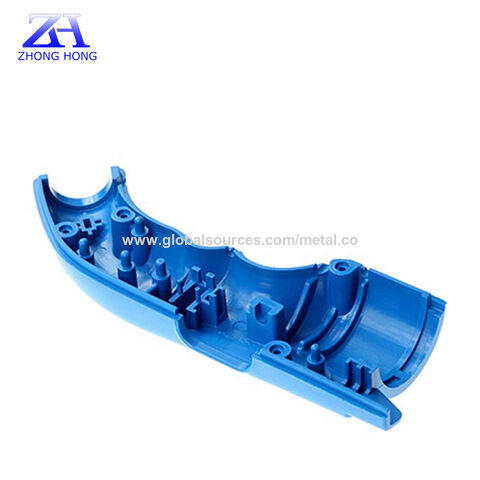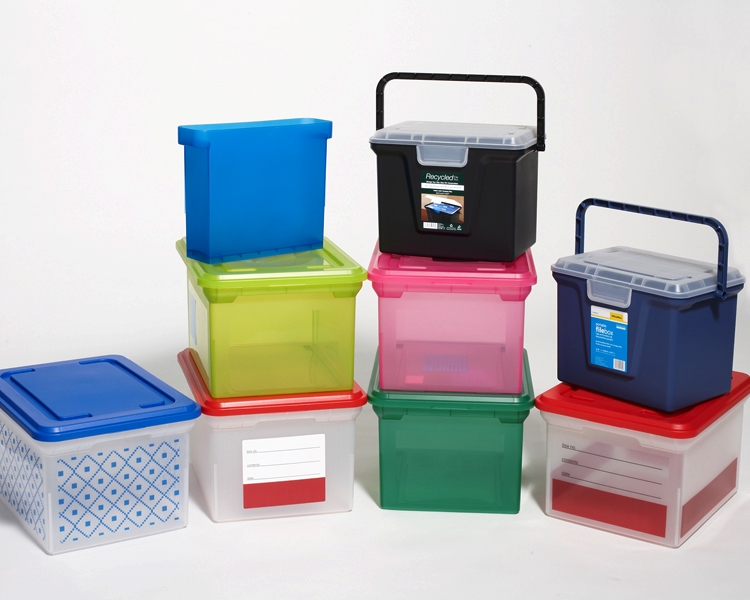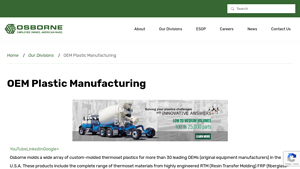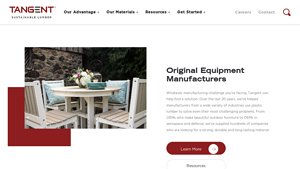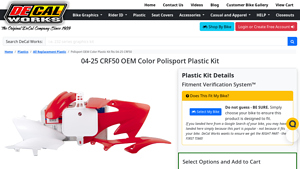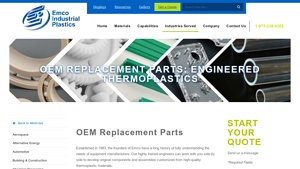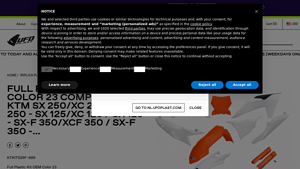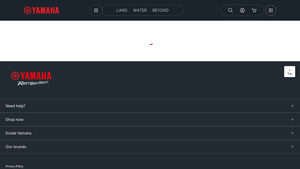Oem Plastic Guide: Type, Cost, Top List…
Introduction: Navigating the Global Market for oem plastic
In the competitive landscape of global manufacturing, sourcing high-quality OEM plastic components can be a daunting challenge for international B2B buyers. As companies across various industries—from automotive to medical—strive for innovation and efficiency, the demand for superior plastic solutions has surged. This guide offers a comprehensive overview of the OEM plastic market, delving into essential aspects such as types of plastics, diverse applications, supplier vetting processes, and cost considerations. By navigating these complexities, B2B buyers can make informed decisions that align with their operational needs and budget constraints.
For businesses in Africa, South America, the Middle East, and Europe—including emerging markets like Saudi Arabia and Vietnam—understanding the intricacies of OEM plastic sourcing is vital. This guide empowers buyers to identify reliable suppliers, evaluate product quality, and leverage innovative manufacturing techniques that can enhance their competitive edge. With actionable insights and expert recommendations, you will be equipped to streamline your procurement processes and foster partnerships that drive growth. Whether you are looking for injection-molded parts, custom profiles, or advanced wiring protection systems, this guide serves as your roadmap to successfully navigate the global OEM plastic market.
Understanding oem plastic Types and Variations
| Type Name | Key Distinguishing Features | Primary B2B Applications | Brief Pros & Cons for Buyers |
|---|---|---|---|
| Thermoplastic | Reusable, easy to mold, and can be reshaped with heat. | Automotive components, consumer goods, medical devices. | Pros: Versatile, cost-effective; Cons: Lower thermal stability compared to thermosets. |
| Thermoset | Hardens permanently when cured, excellent heat resistance. | Electrical components, aerospace parts, industrial equipment. | Pros: High durability, excellent dimensional stability; Cons: Not recyclable, more complex processing. |
| Injection Molded Plastics | High-volume production with precise dimensions. | Packaging, automotive interiors, electronic housings. | Pros: Cost-effective for large runs; Cons: High initial tooling costs. |
| Corrugated Tubing | Flexible, lightweight, and protective for wiring. | Automotive wiring protection, appliance cable management. | Pros: Lightweight, customizable; Cons: Limited structural strength compared to solid plastics. |
| Recycled Plastics | Made from post-consumer materials, eco-friendly. | Packaging, consumer products, automotive components. | Pros: Sustainability benefits, reduced material costs; Cons: Potential variability in quality. |
What Are the Characteristics of Thermoplastics and Their Suitability for B2B Buyers?
Thermoplastics are characterized by their ability to be reshaped with heat, making them ideal for various applications. They are widely used in the automotive industry for components like dashboards and bumpers, as well as in consumer goods such as containers and medical devices. B2B buyers should consider the versatility and cost-effectiveness of thermoplastics, particularly for projects requiring frequent design changes or prototyping. However, their lower thermal stability compared to thermosets may limit their use in high-temperature environments.
How Do Thermoset Plastics Differ from Other OEM Plastics?
Thermoset plastics undergo a curing process that permanently hardens them, providing exceptional heat resistance and dimensional stability. These materials are commonly used in applications requiring high durability, such as electrical components and aerospace parts. For B2B buyers, the main considerations include the material’s excellent performance in demanding environments and its inability to be reshaped once cured. This makes thermosets ideal for specialized applications, albeit at the cost of recyclability and increased processing complexity.
Why Choose Injection Molded Plastics for High-Volume Production?
Injection molded plastics are manufactured using a process that allows for the production of high volumes of parts with precise dimensions. This method is prevalent in packaging, automotive interiors, and electronic housings. B2B buyers benefit from the cost-effectiveness of injection molding, especially for large production runs. However, the initial tooling costs can be high, making it essential for buyers to assess their volume needs and budget before committing to this manufacturing method.
What Are the Advantages of Using Corrugated Tubing in OEM Solutions?
Corrugated tubing is a flexible and lightweight option designed primarily for the protection of wiring. It is widely utilized in automotive applications and appliance cable management. For B2B buyers, the customizability and lightweight nature of corrugated tubing offer significant advantages, especially in applications where weight savings are crucial. However, it is important to note that while it provides excellent protection for wiring, it may not have the same structural strength as solid plastics.
How Can Recycled Plastics Benefit B2B Buyers?
Recycled plastics are derived from post-consumer materials, making them an eco-friendly choice for various applications, including packaging and automotive components. B2B buyers interested in sustainability will find that using recycled materials can enhance their brand image and reduce material costs. However, potential variability in quality can be a concern, necessitating careful supplier selection to ensure that the recycled plastics meet the required specifications for performance and durability.
Key Industrial Applications of oem plastic
| Industry/Sector | Specific Application of OEM Plastic | Value/Benefit for the Business | Key Sourcing Considerations for this Application |
|---|---|---|---|
| Automotive | Wiring Protection Systems | Enhances safety and reliability of electrical components | Compliance with automotive standards, material specifications |
| Medical Devices | Custom Injection Molded Components | Ensures precision and sterility in critical applications | Regulatory compliance (ISO, FDA), material biocompatibility |
| Electronics | Custom Thermoset Plastics for Enclosures | Provides durability and resistance to environmental factors | Temperature resistance, electrical insulation properties |
| Agriculture | Corrosion-resistant Components | Extends lifespan of equipment in harsh environments | Resistance to chemicals, UV stability, and mechanical strength |
| Marine | Specialized Tubing for Fluid Management | Improves operational efficiency and safety | Saltwater resistance, flexibility, and pressure ratings |
How is OEM Plastic Used in the Automotive Sector?
In the automotive industry, OEM plastics are crucial for the production of wiring protection systems. These systems safeguard electrical components from damage due to abrasion, heat, and environmental factors. By ensuring the integrity of wiring harnesses, manufacturers enhance the safety and reliability of vehicles. Buyers in this sector must consider compliance with stringent automotive standards and the specific material requirements to ensure compatibility with various vehicle models.
What Role Does OEM Plastic Play in Medical Devices?
OEM plastics are extensively utilized in the medical device sector for custom injection molded components. These components are essential for devices that require high precision and sterility, such as surgical instruments and diagnostic equipment. The key requirements for international buyers include adherence to regulatory compliance (ISO, FDA) and the selection of biocompatible materials to ensure patient safety. This focus on quality and safety is paramount in maintaining industry standards.
Why Are OEM Plastics Important in Electronics?
In the electronics sector, OEM plastics are often used for custom thermoset plastics in enclosures that protect sensitive components. These materials provide durability and resistance to environmental factors like humidity and temperature fluctuations. Businesses sourcing these plastics need to prioritize properties such as temperature resistance and electrical insulation capabilities to ensure the longevity and performance of their products.
How Do OEM Plastics Benefit the Agriculture Industry?
The agriculture industry leverages OEM plastics for corrosion-resistant components that are vital for equipment operating in harsh environments. These plastics extend the lifespan of machinery by resisting chemicals and UV radiation. Buyers must focus on the mechanical strength and durability of materials to withstand the rigors of agricultural applications, ensuring reliable performance in challenging conditions.
What Are the Applications of OEM Plastics in Marine Environments?
In the marine sector, OEM plastics are used for specialized tubing designed for fluid management systems. These plastics are engineered to withstand saltwater exposure, ensuring operational efficiency and safety in maritime applications. Key considerations for sourcing these materials include flexibility, pressure ratings, and resistance to corrosion, which are critical for maintaining the integrity of marine equipment and systems.
3 Common User Pain Points for ‘oem plastic’ & Their Solutions
Scenario 1: Navigating Quality Assurance in OEM Plastic Components
The Problem: B2B buyers often face challenges related to quality assurance when sourcing OEM plastic components. Many manufacturers offer competitive pricing, but this can sometimes come at the expense of product quality. For example, a buyer in the automotive industry may receive a batch of plastic parts that do not meet the stringent specifications required for safety and performance. This not only jeopardizes the integrity of the final product but also risks costly recalls and damage to the company’s reputation.
The Solution: To overcome this challenge, buyers should prioritize suppliers with robust quality management systems, such as ISO 9001 or IATF 16949 certifications. These certifications indicate a commitment to maintaining high quality throughout the manufacturing process. When engaging with potential suppliers, buyers should request detailed documentation of quality control measures, including testing protocols and failure rates. Conducting on-site visits or audits can also provide insights into the manufacturing practices and quality assurance processes in place. Building a collaborative relationship with the supplier can facilitate open communication about quality expectations, allowing for proactive adjustments to production runs when necessary.
Scenario 2: Managing Supply Chain Disruptions for OEM Plastic Parts
The Problem: Supply chain disruptions are a significant concern for B2B buyers in various industries, particularly those reliant on timely delivery of OEM plastic components. For instance, a buyer in the electronics sector might experience delays due to material shortages or transportation issues, resulting in halted production lines and unmet delivery deadlines. This not only affects immediate operational efficiency but can also lead to longer-term contractual penalties and lost business opportunities.
The Solution: To mitigate the risk of supply chain disruptions, buyers should diversify their supplier base rather than relying on a single source for OEM plastic parts. Engaging multiple suppliers across different regions can create a buffer against localized disruptions. Additionally, buyers should consider implementing a just-in-time inventory system that aligns production schedules with supply chain capabilities. Regularly communicating with suppliers about their production capacities and any potential challenges can also help buyers plan more effectively. Establishing contingency plans, such as identifying alternative materials or suppliers, ensures that operations can continue smoothly even when faced with unforeseen disruptions.
Scenario 3: Customization Challenges in OEM Plastic Manufacturing
The Problem: Customization is a critical requirement for many B2B buyers who need OEM plastic parts tailored to specific applications. However, navigating the complexities of custom designs can be a daunting task. For example, a buyer in the medical device sector may struggle to articulate their needs for specialized components that comply with industry regulations while also meeting performance criteria. Miscommunication can lead to prototypes that fail to meet specifications, resulting in wasted time and resources.
The Solution: To streamline the customization process, buyers should engage in detailed discussions with potential suppliers early in the design phase. Utilizing advanced design tools, such as CAD software, allows buyers to visualize and refine their requirements before production begins. When selecting a supplier, look for those with a strong track record in custom projects and the ability to provide rapid prototyping services. This approach not only accelerates the design process but also allows for iterative feedback and adjustments. Additionally, establishing clear specifications and documentation from the outset can minimize misunderstandings, ensuring that the final products align closely with the buyer’s expectations.
Strategic Material Selection Guide for oem plastic
What Are the Key Materials Used in OEM Plastic Manufacturing?
When selecting materials for OEM plastic applications, it is essential to consider the unique properties, advantages, and limitations of each option. Here, we analyze four common materials used in OEM plastics: Polypropylene (PP), Polyethylene (PE), Acrylonitrile Butadiene Styrene (ABS), and Thermoplastic Elastomers (TPE). Each material has distinct characteristics that can significantly impact product performance and suitability for various applications.
How Does Polypropylene (PP) Perform in OEM Applications?
Polypropylene is a versatile thermoplastic known for its excellent chemical resistance and low density. It typically has a temperature rating of up to 100°C (212°F) and exhibits good fatigue resistance. The primary advantages of PP include its lightweight nature, cost-effectiveness, and recyclability. However, it can be less durable than other materials, particularly under high-stress conditions, and may not perform well in applications requiring high-temperature stability.
For international buyers, understanding compliance with standards such as ASTM and ISO is critical, especially in regions like Europe and the Middle East, where stringent regulations apply. PP is commonly used in automotive components, packaging, and consumer goods, making it a popular choice for OEM applications.
What Are the Benefits of Using Polyethylene (PE) in OEM Plastics?
Polyethylene is another widely used thermoplastic, renowned for its excellent impact resistance and moisture barrier properties. It can withstand temperatures ranging from -50°C to 80°C (-58°F to 176°F). PE is highly durable and resistant to chemicals, making it suitable for various applications, including containers, automotive parts, and piping systems.
The main disadvantage of PE is its lower tensile strength compared to other materials, which can limit its use in high-load applications. For buyers in regions like Africa and South America, the availability of recycled PE can also be a significant consideration, as sustainability becomes increasingly important in procurement decisions.
Why Choose Acrylonitrile Butadiene Styrene (ABS) for OEM Parts?
ABS is a strong, impact-resistant thermoplastic that offers excellent toughness and rigidity. It typically operates within a temperature range of -20°C to 80°C (-4°F to 176°F) and is known for its superior surface finish. ABS is widely used in consumer electronics, automotive parts, and household goods due to its aesthetic appeal and durability.
However, ABS can be more expensive than other plastics and may require additional processing to enhance its performance in high-temperature environments. International buyers should be aware of the specific certifications required for ABS products, especially in the automotive sector, where compliance with IATF 16949 is crucial.
What Are the Advantages of Thermoplastic Elastomers (TPE) in OEM Applications?
Thermoplastic elastomers combine the properties of rubber and plastic, providing flexibility, durability, and excellent weather resistance. TPEs can typically withstand temperatures from -40°C to 120°C (-40°F to 248°F), making them suitable for a wide range of applications, including seals, gaskets, and automotive components.
The primary drawback of TPE is its higher cost compared to standard thermoplastics, which may deter some buyers. Additionally, TPEs may require specialized processing equipment, adding to manufacturing complexity. For buyers in regions like Saudi Arabia and Vietnam, understanding local manufacturing capabilities and material availability is essential for successful procurement.
Summary of Material Selection for OEM Plastics
| Material | Typical Use Case for OEM Plastic | Key Advantage | Key Disadvantage/Limitation | Relative Cost (Low/Med/High) |
|---|---|---|---|---|
| Polypropylene (PP) | Automotive components, packaging | Lightweight and cost-effective | Less durable under high stress | Low |
| Polyethylene (PE) | Containers, piping systems | Excellent impact resistance | Lower tensile strength | Low |
| Acrylonitrile Butadiene Styrene (ABS) | Consumer electronics, automotive parts | Strong and aesthetic finish | Higher cost and processing requirements | Med |
| Thermoplastic Elastomers (TPE) | Seals, gaskets, automotive components | Flexibility and weather resistance | Higher cost and manufacturing complexity | High |
By understanding the properties and implications of these materials, international B2B buyers can make informed decisions that align with their specific application needs and regional compliance standards.
In-depth Look: Manufacturing Processes and Quality Assurance for oem plastic
What Are the Main Stages of Manufacturing OEM Plastic Products?
The manufacturing process for OEM plastics encompasses several key stages, each critical to ensuring the final product meets quality and performance standards. The primary stages include material preparation, forming, assembly, and finishing.
How Is Material Prepared for OEM Plastic Manufacturing?
Material preparation involves selecting the appropriate plastic resin based on the specific requirements of the application. This could range from thermoplastics to thermosets, depending on the desired properties like strength, flexibility, or temperature resistance. The selected resin is then processed to remove impurities and ensure consistency. Techniques such as drying, blending with additives, and colorant integration may be employed to enhance performance characteristics and achieve the desired aesthetic.
What Forming Techniques Are Used in OEM Plastic Manufacturing?
Forming is the stage where the prepared materials are transformed into specific shapes. Several techniques are commonly utilized:
-
Injection Molding: This is the most prevalent method for high-volume production. Material is heated until molten and injected into a mold, where it cools and solidifies. This technique is highly efficient and allows for complex geometries.
-
Extrusion: In this process, plastic is forced through a die to create long shapes like pipes or sheets. Extrusion is suitable for products requiring uniform cross-sections.
-
Blow Molding: Often used for hollow objects, this technique involves inflating a heated plastic tube to form a container or bottle.
-
Thermoforming: This involves heating a plastic sheet until pliable and then forming it over a mold. It’s ideal for low-volume production and can accommodate larger components.
-
Compression Molding: Used primarily for thermoset plastics, material is placed in a heated mold and allowed to harden under pressure.
Each method has its advantages and is selected based on factors such as product design, volume, and material type.
How Are OEM Plastic Products Assembled?
In many cases, OEM plastic products consist of multiple components that require assembly. This may involve processes such as ultrasonic welding, adhesive bonding, or mechanical fastening. Careful consideration of assembly methods is crucial, as it can impact the product’s durability and functionality.
What Finishing Processes Are Essential for OEM Plastic Products?
Finishing processes enhance the product’s appearance and performance. Common techniques include:
-
Surface Treatment: Methods like sanding, polishing, or coating can improve aesthetics and functionality, such as adding UV resistance or enhancing grip.
-
Painting and Printing: Custom branding or aesthetic elements can be applied through techniques like screen printing, pad printing, or painting.
-
Quality Control Inspection: Final inspection ensures that the product meets specifications, checking for defects in appearance, dimensions, and functionality.
How Is Quality Assurance Implemented in OEM Plastic Manufacturing?
Quality assurance (QA) in OEM plastic manufacturing is paramount to meet both international standards and specific industry requirements. Key elements include adherence to standards such as ISO 9001, which outlines criteria for a quality management system, and industry-specific certifications such as ISO/TS 16949 for automotive applications.
What Are the Key QC Checkpoints in OEM Plastic Manufacturing?
Quality control is integrated throughout the manufacturing process with several checkpoints:
-
Incoming Quality Control (IQC): This initial step involves inspecting raw materials upon arrival to ensure they meet specified standards. Suppliers may provide material certification reports, which should be verified by the receiving facility.
-
In-Process Quality Control (IPQC): During production, continuous monitoring is conducted to detect any deviations from specifications. This can include dimensional checks, visual inspections, and functional tests at various stages of the process.
-
Final Quality Control (FQC): After production, a comprehensive inspection is performed to ensure that the final product meets all specifications before it is shipped. This includes functional testing, aesthetic evaluation, and dimensional verification.
What Testing Methods Are Commonly Used for OEM Plastics?
Several testing methods are standard in the industry to validate the quality of OEM plastic products:
-
Mechanical Testing: This assesses properties such as tensile strength, impact resistance, and flexibility.
-
Thermal Analysis: Techniques like Differential Scanning Calorimetry (DSC) determine thermal properties and behavior under heat.
-
Chemical Resistance Testing: This evaluates how materials withstand exposure to various chemicals.
-
Dimensional Inspection: Using calipers, gauges, or 3D scanning, manufacturers ensure that products meet specified tolerances.
How Can B2B Buyers Verify Supplier Quality Control?
B2B buyers should take proactive steps to verify the quality control measures of their suppliers. Key actions include:
-
Conducting Audits: Regularly scheduled audits can help assess the effectiveness of a supplier’s quality management system. These can be internal or involve third-party auditors.
-
Requesting Quality Reports: Buyers should ask for detailed quality assurance reports, including IQC, IPQC, and FQC data, to understand the supplier’s quality performance over time.
-
Third-Party Inspections: Engaging an independent inspection service can provide an unbiased evaluation of the supplier’s manufacturing processes and quality controls.
What Are the Quality Certification Nuances for International B2B Buyers?
For international buyers, particularly those from regions like Africa, South America, the Middle East, and Europe, understanding the certification landscape is crucial. Certifications like CE mark for European markets signify compliance with safety and environmental standards, while others like API are critical for the oil and gas sector. Buyers should ensure that their suppliers hold relevant certifications and understand any regional compliance requirements to avoid legal and operational issues.
In conclusion, a thorough understanding of the manufacturing processes and quality assurance mechanisms for OEM plastics is essential for B2B buyers. By focusing on the manufacturing stages, quality checkpoints, testing methods, and supplier verification strategies, buyers can make informed decisions, ensuring they receive high-quality products that meet their specific needs.
Practical Sourcing Guide: A Step-by-Step Checklist for ‘oem plastic’
Introduction
This guide provides a practical checklist for international B2B buyers seeking to procure OEM plastic products. Sourcing high-quality OEM plastics involves understanding your specific needs, evaluating potential suppliers, and ensuring compliance with industry standards. By following this step-by-step checklist, you can streamline your procurement process and make informed decisions.
Step 1: Define Your Technical Specifications
Clearly outline the technical requirements for your OEM plastic components. This includes material type, dimensions, weight, and any specific performance criteria. Knowing your specifications helps in identifying suppliers that can meet your needs and reduces the risk of receiving subpar products.
- Material Considerations: Specify if you need thermoset or thermoplastic materials based on the application.
- Performance Standards: Include any necessary certifications such as ISO or IATF for automotive parts.
Step 2: Research Potential Suppliers
Conduct thorough research to identify potential suppliers specializing in OEM plastics. Look for manufacturers with a proven track record in your industry and those who offer the specific products you need.
- Industry Reputation: Check online reviews and testimonials from other businesses that have worked with the supplier.
- Market Presence: Evaluate the supplier’s experience in international markets, especially in regions relevant to your operations.
Step 3: Evaluate Supplier Certifications
Verify that potential suppliers hold the necessary certifications to ensure quality and compliance. Certifications such as ISO 9001 for quality management and IATF 16949 for automotive standards are crucial for ensuring product reliability.
- Quality Assurance Processes: Inquire about their quality control measures and inspection processes.
- Sustainability Practices: Assess their commitment to sustainability, including the use of recycled materials.
Step 4: Request Samples and Prototypes
Before making a bulk order, request samples or prototypes of the OEM plastics to evaluate their quality and suitability for your application. This step is vital for assessing the supplier’s capabilities firsthand.
- Material Testing: Conduct tests on the samples to ensure they meet your performance criteria.
- Design Compatibility: Ensure the prototypes fit seamlessly into your existing systems or products.
Step 5: Discuss Production Capacity and Lead Times
Engage in discussions regarding the supplier’s production capacity and lead times. Understanding their capabilities helps you plan your inventory and production schedules effectively.
- Volume Flexibility: Confirm if they can accommodate both small and large orders based on your needs.
- Delivery Reliability: Ask about their on-time delivery track record to avoid disruptions in your supply chain.
Step 6: Evaluate Pricing and Payment Terms
Analyze the pricing structure of potential suppliers and compare it with the market rates. Ensure that the pricing aligns with your budget while still reflecting the quality of products you require.
- Transparency in Costs: Request a detailed breakdown of costs, including shipping and any additional fees.
- Payment Flexibility: Negotiate payment terms that suit your cash flow needs, such as net 30 or net 60 options.
Step 7: Establish a Communication Plan
Once you’ve selected a supplier, establish a clear communication plan to facilitate ongoing collaboration. Regular communication helps address any issues promptly and fosters a strong working relationship.
- Points of Contact: Designate key contacts on both sides for efficient communication.
- Reporting Mechanisms: Set up regular updates on production status and any potential issues that may arise.
By following this checklist, you can enhance your sourcing strategy for OEM plastics, ensuring that you partner with reliable suppliers that meet your specific business needs.
Comprehensive Cost and Pricing Analysis for oem plastic Sourcing
What Are the Key Cost Components in OEM Plastic Manufacturing?
Understanding the cost structure of OEM plastic sourcing is crucial for international buyers. The primary cost components include:
-
Materials: The choice of raw materials significantly impacts costs. Common materials like polyethylene and polypropylene are typically less expensive compared to specialized compounds like Kynar. Sustainable options, such as recycled plastics, may also be available, potentially lowering costs while appealing to environmentally-conscious buyers.
-
Labor: Labor costs vary by region and production scale. Countries with lower labor costs may offer competitive pricing, but it’s essential to evaluate the skill level and training of the workforce to ensure quality.
-
Manufacturing Overhead: This includes costs related to facility maintenance, utilities, and equipment depreciation. Efficient operations can minimize overhead, but buyers should inquire about the supplier’s operational efficiency.
-
Tooling: Custom molds and tooling can represent a significant upfront investment. Tooling costs are often amortized over production runs, so larger orders can lead to lower per-unit costs.
-
Quality Control (QC): Implementing stringent QC processes incurs additional costs but is vital for maintaining product standards, especially for industries with rigorous requirements like automotive and medical sectors.
-
Logistics: Transportation and handling costs can vary widely based on geographic location and Incoterms. Understanding these costs is essential for calculating the Total Cost of Ownership (TCO).
-
Margin: Suppliers will add a profit margin to their costs, which can fluctuate based on market demand and competition.
How Do Price Influencers Affect OEM Plastic Sourcing?
Several factors influence the pricing structure in OEM plastic sourcing:
-
Volume/MOQ: Larger orders typically result in lower per-unit costs due to economies of scale. Buyers should negotiate minimum order quantities (MOQs) that align with their needs while maximizing cost efficiency.
-
Specifications and Customization: Custom designs or specific material requirements often lead to higher costs. It’s crucial to balance customization needs with budget constraints.
-
Quality and Certifications: Suppliers with quality certifications (e.g., ISO 16949 for automotive) may charge higher prices, but these certifications ensure adherence to industry standards, which can reduce risks in the supply chain.
-
Supplier Factors: The supplier’s reputation, production capacity, and geographical location can all influence pricing. Established suppliers may offer better reliability but at a premium.
-
Incoterms: The terms of shipping and delivery can significantly affect overall costs. Buyers should clarify these terms to understand who bears the cost and risk at various stages of transport.
What Negotiation Tips Can Help Optimize Costs for International Buyers?
-
Understand the Total Cost of Ownership (TCO): When evaluating suppliers, consider not just the initial price but all associated costs, including shipping, handling, and potential tariffs. This holistic view will help identify the most cost-effective option.
-
Leverage Volume Discounts: If possible, consolidate orders to meet higher MOQs, which can lead to significant savings.
-
Explore Multiple Suppliers: Don’t settle for the first quote. Engaging multiple suppliers can create competitive tension, leading to better pricing.
-
Request Transparency: Ask suppliers to break down their pricing structure. Understanding how costs are derived can provide insights for negotiation.
-
Consider Long-Term Relationships: Building a strong relationship with suppliers may result in better pricing and priority service in the future.
What Are the Pricing Nuances for International B2B Buyers?
International buyers, especially from regions like Africa, South America, the Middle East, and Europe, should be aware of several pricing nuances:
-
Currency Fluctuations: Exchange rates can impact costs, so consider this when budgeting for international purchases.
-
Tariffs and Import Duties: Be aware of any tariffs that may apply to imported goods, which can increase the overall cost.
-
Cultural Considerations: Understanding the cultural context in negotiations can aid in building rapport and achieving better terms.
-
Delivery Times: International logistics can affect lead times and costs. Discuss delivery expectations upfront to avoid unexpected charges.
Disclaimer
The prices and cost structures discussed are indicative and can vary based on market conditions, supplier capabilities, and specific buyer requirements. Always conduct thorough market research and consult with multiple suppliers to obtain accurate pricing tailored to your needs.
Alternatives Analysis: Comparing oem plastic With Other Solutions
Exploring Alternatives to OEM Plastic: A Comprehensive Comparison
When it comes to manufacturing and sourcing materials, OEM plastic stands out as a versatile solution for various industries. However, B2B buyers must consider alternative materials or methods that might better align with their specific needs. This analysis will compare OEM plastic with two viable alternatives: thermoset plastics and metal components. Each solution has unique benefits and drawbacks, making it crucial for decision-makers to understand their options.
| Comparison Aspect | OEM Plastic | Thermoset Plastics | Metal Components |
|---|---|---|---|
| Performance | High durability and flexibility; suitable for a range of applications | Excellent heat and chemical resistance; ideal for high-stress environments | Superior strength and rigidity; can withstand heavy loads |
| Cost | Generally cost-effective; lower initial investment | Higher upfront costs due to complex manufacturing processes | Often more expensive; costs vary with metal type and processing |
| Ease of Implementation | Simple and quick to mold; customizable | More complex to mold; requires specialized processes | Requires advanced tooling and machining, increasing lead times |
| Maintenance | Low maintenance; resistant to corrosion | Minimal maintenance; excellent longevity | Higher maintenance due to corrosion and wear |
| Best Use Case | Ideal for consumer electronics, automotive parts, and medical devices | Best for applications requiring high thermal stability and corrosion resistance | Best suited for structural components in construction and heavy machinery |
What Are the Advantages and Disadvantages of Thermoset Plastics?
Thermoset plastics are a strong alternative to OEM plastics, especially in applications where durability and resistance to heat and chemicals are paramount. These materials undergo a curing process that makes them rigid and heat-resistant, making them suitable for automotive parts and electrical enclosures. However, the manufacturing process can be complex and costly, which may deter some manufacturers from using them. Additionally, thermoset plastics are not recyclable, leading to environmental considerations.
How Do Metal Components Compare to OEM Plastics?
Metal components are known for their strength and structural integrity, making them the go-to choice for applications requiring heavy load-bearing capabilities. They excel in durability and can withstand harsh conditions, which is crucial in industries like construction and aerospace. However, metal components tend to be heavier, more expensive, and require more complex manufacturing processes, which can lead to longer lead times. Maintenance can also be an issue, as metals are susceptible to corrosion unless treated or coated.
Making the Right Choice: What Should B2B Buyers Consider?
In selecting the right material or solution for their needs, B2B buyers must evaluate several factors, including performance requirements, budget constraints, and the nature of their application. OEM plastic offers a balanced approach with its cost-effectiveness and versatility, making it a strong candidate for many industries. However, for specialized applications requiring high heat resistance or structural integrity, thermoset plastics or metal components may be more appropriate. Ultimately, understanding the specific demands of the project and the characteristics of each alternative will lead to a more informed decision, ensuring that the chosen solution aligns with both operational and financial goals.
Essential Technical Properties and Trade Terminology for oem plastic
What Are the Key Technical Properties of OEM Plastics?
Understanding the essential technical properties of OEM plastics is crucial for B2B buyers. These specifications dictate the performance, reliability, and suitability of the plastic components for various applications. Here are some of the most critical properties:
-
Material Grade
The material grade refers to the specific type of plastic used in manufacturing. Common grades include polyethylene (PE), polypropylene (PP), and polyvinyl chloride (PVC). Each grade has distinct properties, such as tensile strength, chemical resistance, and thermal stability. Selecting the appropriate material grade is vital for ensuring the product meets industry standards and performs well in its intended application. -
Tolerance
Tolerance is the permissible limit of variation in a physical dimension of a part. It is crucial for ensuring parts fit together correctly in assemblies. High tolerance levels are particularly important in sectors like automotive and medical where precision is paramount. Poor tolerances can lead to increased production costs and product failures, impacting overall business efficiency. -
Impact Resistance
This property measures a material’s ability to withstand sudden force or shock without breaking. For OEM plastics used in automotive and industrial applications, high impact resistance is essential to prevent failure during operation. Understanding the impact resistance helps in selecting materials that can endure harsh environments. -
Thermal Stability
Thermal stability is the ability of a plastic to maintain its properties at elevated temperatures. This property is vital for applications that involve exposure to heat, such as automotive parts near engines or electronic housings. Materials with high thermal stability reduce the risk of deformation and ensure longevity, thereby enhancing product reliability. -
Chemical Resistance
This property indicates how well a plastic can withstand exposure to various chemicals without degrading. For OEM plastics used in industries like agriculture, automotive, and medical, chemical resistance is critical. It ensures that components do not fail prematurely when exposed to oils, solvents, or other corrosive substances. -
Surface Finish
The surface finish affects the aesthetic quality and functionality of the final product. A smooth finish may be required for components that are visible in consumer-facing products, while textured finishes can enhance grip or reduce glare. Understanding surface finish requirements helps in aligning product development with customer expectations and regulatory standards.
What Are Common Trade Terms Used in OEM Plastic Procurement?
Familiarity with trade terminology is essential for effective communication and negotiation in the OEM plastics industry. Here are some commonly used terms:
-
OEM (Original Equipment Manufacturer)
An OEM refers to a company that produces parts or equipment that may be marketed by another manufacturer. In the context of plastics, an OEM typically requires customized plastic components tailored to their specific needs. Understanding the OEM model is crucial for buyers when sourcing materials and negotiating contracts. -
MOQ (Minimum Order Quantity)
MOQ is the smallest quantity of a product that a supplier is willing to sell. This term is essential for B2B buyers as it affects inventory management and cost efficiency. Buyers should be aware of the MOQ to ensure they are making financially viable orders. -
RFQ (Request for Quotation)
An RFQ is a document that a buyer sends to suppliers to request pricing information for specific products or services. This process is vital for comparing costs and ensuring that the buyer receives competitive pricing. A well-structured RFQ can streamline procurement and facilitate better supplier relationships. -
Incoterms (International Commercial Terms)
Incoterms are a set of predefined international trade terms that clarify the responsibilities of buyers and sellers regarding shipping costs, risks, and insurance. Knowledge of Incoterms is crucial for international B2B transactions, as they help avoid misunderstandings and ensure compliance with shipping regulations. -
Lead Time
Lead time refers to the amount of time it takes from placing an order until the product is delivered. Understanding lead times is crucial for planning production schedules and managing supply chain efficiency. Buyers should communicate clearly with suppliers to align expectations and timelines. -
Quality Assurance (QA)
QA refers to the processes and procedures that ensure products meet specified quality standards. In the OEM plastics industry, QA is critical for maintaining compliance with industry regulations and ensuring customer satisfaction. Buyers should prioritize suppliers that have robust QA processes in place to mitigate risks associated with product defects.
By understanding these essential properties and trade terms, B2B buyers can make informed decisions, streamline procurement processes, and foster successful partnerships in the OEM plastics market.
Navigating Market Dynamics and Sourcing Trends in the oem plastic Sector
What Are the Current Market Dynamics and Key Trends Affecting OEM Plastic Sourcing?
The OEM plastic sector is undergoing significant transformation, driven by global economic shifts and technological advancements. Key drivers include the increasing demand for lightweight materials across industries like automotive, aerospace, and consumer electronics, which are striving for greater energy efficiency. Emerging markets, particularly in Africa, South America, and the Middle East, are ramping up their industrial capabilities, leading to heightened demand for quality plastic components. Furthermore, the rise of electric vehicles (EVs) is generating new opportunities for OEM plastics, as manufacturers seek innovative, durable, and lightweight solutions.
B2B technology trends are also shaping the landscape. Automation in manufacturing processes and the adoption of Industry 4.0 principles are facilitating more efficient production, cost savings, and improved quality control. Companies are increasingly leveraging advanced data analytics and AI to optimize supply chains and enhance decision-making. For international buyers, these trends mean more competitive pricing and reduced lead times, making it essential to partner with suppliers who are at the forefront of these technological advancements.
How Can Sustainability and Ethical Sourcing Influence OEM Plastic Procurement?
Sustainability is becoming a pivotal factor in B2B procurement strategies, particularly in the OEM plastic sector. The environmental impact of plastic production is under scrutiny, compelling manufacturers to adopt more sustainable practices. This includes using recycled materials and ensuring that the manufacturing processes are less harmful to the environment. Buyers are increasingly prioritizing suppliers with sustainability certifications, such as ISO 14001 for environmental management, as part of their sourcing criteria.
Ethical supply chains are equally important. Companies are expected to ensure that their suppliers adhere to fair labor practices and responsible sourcing methods. The use of ‘green’ materials, such as bioplastics or recycled plastics, not only helps in reducing carbon footprints but also enhances brand reputation among environmentally conscious consumers. For international buyers, particularly in regions like Europe and the Middle East, aligning procurement strategies with sustainability goals can lead to long-term cost savings and compliance with increasingly stringent regulations.
What Is the Evolution of the OEM Plastic Sector and Its Relevance to Today’s Buyers?
The OEM plastic industry has evolved significantly since its inception, transitioning from simple applications to complex, high-performance components that serve diverse sectors. Initially dominated by straightforward injection molding processes for consumer goods, the sector has expanded to include advanced techniques such as thermoset molding and 3D printing. This evolution reflects the growing need for customization and precision in manufacturing.
As the global marketplace becomes more interconnected, the importance of understanding this evolution cannot be overstated for B2B buyers. A historical perspective on OEM plastics allows buyers to appreciate the innovations that have shaped current offerings and anticipate future trends. This knowledge is crucial for making informed purchasing decisions, ensuring that businesses remain competitive in an ever-changing landscape.
In conclusion, navigating the OEM plastic sector requires an understanding of market dynamics, a commitment to sustainability, and an appreciation of the industry’s historical context. International buyers must leverage these insights to forge strategic partnerships and optimize their sourcing strategies for success in today’s competitive environment.
Frequently Asked Questions (FAQs) for B2B Buyers of oem plastic
-
How do I choose the right OEM plastic supplier for my business needs?
Selecting the right OEM plastic supplier involves several key considerations. Start by assessing the supplier’s industry experience and their specialization in the type of plastic products you need. Look for certifications that indicate adherence to international quality standards, such as ISO 9001 or IATF 16949 for automotive applications. Request samples to evaluate product quality and ensure they can meet your specific requirements, including customization options. Finally, consider their logistics capabilities and responsiveness to inquiries, as these factors will impact your overall experience and satisfaction. -
What types of OEM plastic materials are available for various applications?
OEM plastic suppliers typically offer a range of materials suited for different applications, including thermoplastics like polyethylene and polypropylene for their versatility, and thermosetting plastics for durability under high temperatures. Depending on your application, you might also consider specialty materials like nylon for strength, or TPE for flexibility. It’s essential to discuss your specific requirements with potential suppliers to determine which material best fits your product’s performance criteria and industry standards. -
What customization options should I expect from an OEM plastic manufacturer?
Many OEM plastic manufacturers provide extensive customization options to meet specific client needs. This can include custom shapes, sizes, colors, and material blends tailored to your application’s requirements. Some suppliers also offer design assistance to help optimize product functionality and manufacturability. Be sure to inquire about their capabilities in prototyping and small-batch production, which can be crucial for testing before large-scale manufacturing. Clear communication about your specifications will ensure that the supplier can deliver the products you envision. -
What are the typical minimum order quantities (MOQs) for OEM plastic products?
Minimum order quantities (MOQs) can vary significantly between OEM plastic suppliers and are often influenced by the type of product and manufacturing processes involved. Generally, MOQs may range from a few hundred to several thousand units. It’s advisable to discuss your project volume during initial communications, as some suppliers may offer flexibility for new clients or specific projects. Understanding the MOQ will help you plan your inventory and cash flow effectively while ensuring you meet production timelines. -
What payment terms should I expect when working with an OEM plastic supplier?
Payment terms can vary widely among OEM plastic suppliers and are typically negotiated based on factors like order size, supplier relationship, and country of origin. Common arrangements include partial upfront payments with the balance due upon delivery or net terms such as 30, 60, or 90 days. It’s crucial to clarify payment terms before finalizing contracts to avoid misunderstandings. Additionally, consider discussing options for letters of credit or escrow services, particularly for large international transactions, to mitigate risk. -
How do I ensure quality assurance in my OEM plastic products?
Quality assurance (QA) is vital in OEM plastic manufacturing to ensure that products meet specified standards. Look for suppliers that implement rigorous QA processes, including incoming material inspections, in-process testing, and final product evaluations. Request information on their quality certifications and compliance with industry standards. Additionally, consider establishing clear specifications and conducting periodic audits or inspections during production. This proactive approach helps identify potential issues early and ensures that the final products meet your quality expectations. -
What logistics considerations should I keep in mind when sourcing OEM plastic products internationally?
When sourcing OEM plastic products internationally, logistics play a crucial role in ensuring timely delivery and cost-effectiveness. Consider the supplier’s shipping capabilities, including their experience with customs clearance and international shipping regulations. Discuss incoterms (International Commercial Terms) to clarify responsibilities for shipping, insurance, and tariffs. It’s also wise to evaluate the lead times involved and how they align with your production schedule. Collaborating with freight forwarders familiar with your supplier’s location can streamline the process and mitigate potential delays. -
What are the potential challenges of sourcing OEM plastic products from international suppliers?
Sourcing OEM plastic products from international suppliers can present several challenges, including language barriers, differing regulatory standards, and cultural differences in business practices. Time zone differences can complicate communication and delay responses to inquiries. Additionally, navigating international shipping logistics and potential customs issues may lead to unforeseen delays or costs. To mitigate these challenges, conduct thorough due diligence on potential suppliers, establish clear communication channels, and consider working with local representatives or agents who understand the market dynamics.
Important Disclaimer & Terms of Use
⚠️ Important Disclaimer
The information provided in this guide, including content regarding manufacturers, technical specifications, and market analysis, is for informational and educational purposes only. It does not constitute professional procurement advice, financial advice, or legal advice.
While we have made every effort to ensure the accuracy and timeliness of the information, we are not responsible for any errors, omissions, or outdated information. Market conditions, company details, and technical standards are subject to change.
B2B buyers must conduct their own independent and thorough due diligence before making any purchasing decisions. This includes contacting suppliers directly, verifying certifications, requesting samples, and seeking professional consultation. The risk of relying on any information in this guide is borne solely by the reader.
Top 7 Oem Plastic Manufacturers & Suppliers List
1. Osborne – Custom-Molded Thermoset Plastics
Domain: osborne-ind.com
Registered: 1997 (28 years)
Introduction: Osborne molds a wide array of custom-molded thermoset plastics for more than 30 leading OEMs in the U.S.A. These products include thermoset materials such as RTM (Resin Transfer Molding) FRP (fiberglass-reinforced plastic) composites, RIM (Reaction Injection Molding) elastomers, and structural foams. Applications include parts for trucks, buses, off-road vehicles, agricultural equipment, waste-wat…
2. AKF Plastics – Custom Injection Moulded Parts
Domain: akf-plastics.com
Registered: 2019 (6 years)
Introduction: AKF Plastics is a leading Original Equipment Manufacturer (OEM) for plastic injection moulded parts, specializing in high-quality custom plastic solutions across various industries including automotive, aerospace, building and construction, and machine and equipment manufacturing. Key features include:
– Expertise in OEM plastics manufacturing with a focus on precision, innovation, and efficiency…
3. Tangent Materials – OEM Plastic Lumber Solutions
Domain: tangentmaterials.com
Registered: 2020 (5 years)
Introduction: Tangent Materials specializes in OEM plastic lumber solutions for various industries, including outdoor furniture, aerospace, and defense. Their products are made from recycled plastic, offering high-performance, durability, and low maintenance. Key features include a wide selection of colors, shapes, and sizes, along with a patented colorizing process that creates unique multi-tone surfaces and w…
4. Polisport – OEM Color Plastic Kit for Honda CRF50F
Domain: decalmx.com
Registered: 1999 (26 years)
Introduction: {“Product Name”: “Polisport OEM Color Plastic Kit”, “Fits”: “Honda CRF50F (2004-2025)”, “Color”: “Red, White”, “Price”: “$99.95”, “Discount”: “9% Off – You Save $10.00”, “Part Number”: “1685-3429”, “Manufacturer”: “Polisport”, “Manufacturer Part Number”: “90025”, “Material”: “Durable Gloss Polypropylene (DGP)”, “Finish”: “Glossy”, “Kit Includes”: [“Front Fender”, “Front Number Plate”, “Radiator Sh…
5. Emco Industrial Plastics – OEM Replacement Parts
Domain: emcoplastics.com
Registered: 1997 (28 years)
Introduction: OEM Replacement Parts Manufacturer, Emco Industrial Plastics offers a wide range of materials and capabilities including: Plastics, Premium Rubber & Polymer Solutions, Tubing, Foam & Sponge. Key capabilities include Plastic Cut to Size, Displays, Machine Guard Covers, Laser Cutting, CNC Machining, CNC Routing, Custom Fabrication, Plastic Welding, Edge Finishing, Forming & Polishing, Drape & Oven F…
6. Ufo Plast – Full Plastic Kit OEM Color 23
Domain: us.ufoplast.com
Registered: 2001 (24 years)
Introduction: {“product_name”: “Full Plastic Kit OEM Color 23”, “brand”: “Ufo Plast”, “compatible_models”: [“Ktm SX 250/XC 250 (2024)”, “Ktm SX 250/XC 250 (2023)”, “Ktm SX 125/XC 125 (2024)”, “Ktm SX 125/XC 125 (2023)”, “Ktm SX-F 350/XCF 350 (2024)”, “Ktm SX-F 350/XCF 350 (2023)”, “Ktm SX-F 450/XCF 450 (2024)”, “Ktm SX-F 450/XCF 450 (2023)”, “Ktm SX 300/XC 300 (2024)”, “Ktm SX 300/XC 300 (2023)”, “Ktm SX-F 250/…
7. Yamaha – Genuine Plastic Kits
Domain: yamaha-motor.com
Registered: 1997 (28 years)
Introduction: This company, Yamaha – Genuine Plastic Kits, is a notable entity in the market. For specific product details, it is recommended to visit their website directly.
Strategic Sourcing Conclusion and Outlook for oem plastic
As global markets continue to evolve, the strategic sourcing of OEM plastic components presents significant opportunities for international buyers. Companies like 4OEM Plastics, Osborne Industries, and AKF Plastics exemplify the importance of high-quality, custom solutions tailored to diverse industries, from automotive to medical. These manufacturers emphasize not only the quality of their products but also the importance of customer-centric service, flexible production capabilities, and adherence to international standards.
For B2B buyers, particularly in regions such as Africa, South America, the Middle East, and Europe, strategic sourcing offers a pathway to enhance supply chain efficiency and reduce costs. By partnering with reliable OEM plastic suppliers, companies can ensure that they meet the growing demand for innovative and sustainable products while maintaining a competitive edge in their respective markets.
Looking ahead, the landscape for OEM plastics is poised for growth, driven by advancements in technology and a focus on sustainability. Now is the time for international buyers to engage with trusted suppliers who can support their unique requirements. Embrace the potential of strategic sourcing—invest in the future of your business by establishing strong partnerships within the OEM plastic sector.
